By Ludwig Heinrich Dyck
When rebel peasants under a charismatic army deserter named Liu Pang descended on the capital city of Hsien Yang in 206 bc, they did so under the considerable shadow of the Ch’in dynasty’s former ruler, Shih Huang-ti. The bloody devastation that Liu Pang and his minions inflicted on the city, including the execution of Shi Huang-ti’s son, Emperor Tzu Ying, and the burning of 277 royal palaces, was an act of defiance that no one could have imagined under the first Ch’in emperor, a man so fearsome that his very name was still spoken in whispers, 15 years after his death.
That emperor, Shih Huang-ti, was born in 259 bc in Han-tan, the capital of the Chao Kingdom. His father, future Ch’in king Tzu-ch’u, was then a hostage in Han-tan, where he became enamored of the beautiful concubine and dancer Zhao Li. The young Cheng, as he was named by his parents, grew up in a war-torn period when the chivalrous ways of the ancient court had been replaced by the grim brutality of mercenary warlords. When he succeeded his father on the Ch’in throne in 246 bc, Cheng inherited a kingdom, but not a nation. Indeed, there was no conception of China as a discrete land or culture. The people in the various kingdoms spoke different languages, had different economic and political systems, and followed a bewildering assortment of different religions.
Cheng’s “Cap and Sword”
When Cheng turned 21, he ceremoniously put on the “cap and sword” of adulthood. He would quickly find need of his sword, since he soon had to deal with his first rebellion. Lao Ai, a lover of Cheng’s mother, had misused her royal seal to win the loyalty of a number of troops, including the palace guard and capital militia. Fortunately for Cheng, a number of powerful warlords rallied to his aid, and the fighting in the capital ended with the decapitation of several hundred of Lao Ai’s men. The skulls of the palace guard commander and 20 others were spiked on poles and left to rot in the sun, while the revolt’s instigator, Lao Ai, was pulled apart by horses. Lao Ai’s entire clan was exterminated, and another 4,000 people were stripped of their hereditary nobility.
Lao Ai had actually, if unwittingly, done Cheng a favor, allowing him to clean house at the beginning of his reign and providing him with an easy military triumph that helped cement his reputation as a powerful ruler. Still, Cheng was not a natural warrior-king like his comparatively close contemporary, Alexander the Great. Instead, he was a workaholic administrator, not resting until his alloted paperwork was done each day. Wei Liao, Cheng’s chief of staff, described his master vividly, if not necessarily sympathetically, as “a man with a high-bridged nose, long narrow eyes, the breast of a bird of prey, and the voice of a jackal; of an ungrateful disposition with the mind of a tiger or a wolf.”
Cheng was intent on continuing the rigid authoritarian methods of Ch’in Dynasty forerunner Lord Shang, who extolled a strong central government founded on the twin bolsters of agriculture and war. In carrying out his philosophy, Shang brutally suppressed the old feudal nobility and merchant classes. Military virtue—based on the number of enemy heads cut off in battle—became the only road to social advancement. Cheng continued this bully-boy course, appointing two determined acolytes of Shangian “Legalist” philosophy as his chief advisers—politically savvy diplomat Li Ssu and militiary theoretician Wei Liao. Both men hailed from the outlying region of Ch’u, reflecting Cheng’s openness to foreign-bred talent. Li Ssu convinced Cheng that the time was right to conquer the rest of China, and Wei Liao came up with a grand strategy to do just that, finishing off the six other states one at a time to prevent them from forming a unified front.
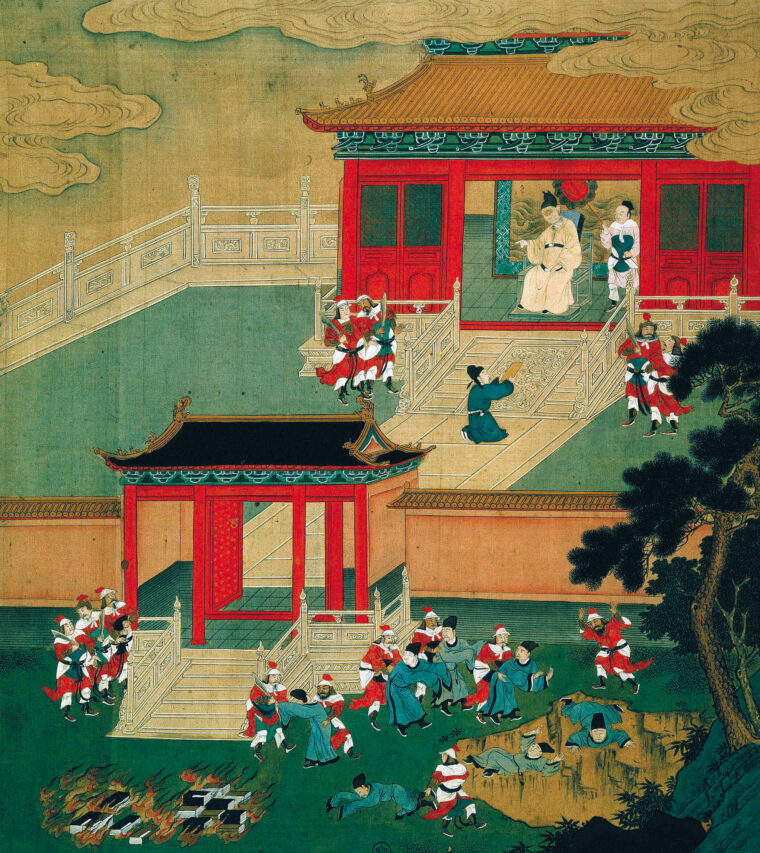
A Kingdom Set for War
Cheng and his kingdom were certainly ready for war. Shielded by the Yellow River on the northeast and a high wall of mountains to the southeast, Ch’in boasted a thriving population swelled by immigration. Massive irrigation projects and farsighted conservation measures protected the kingdom’s natural resources from overexploitation. Peasants working their own land proved more productive than slaves who toiled for their feudal masters, and the excess population was freed to be drafted into the army. Morale among both peasants and soldiers was high; each group felt that King Cheng looked out for ordinary men such as themselves, instead of worrying endlessly over how to placate rich feudal lords, greedy merchants, and fanciful intellectuals.
With preparations for conquest completed, Cheng first turned his eyes to Chao, next to Ch’in the most powerful of the seven Chinese states. After provoking a war between Chao and the Kingdom of Yen in 236 bc, Cheng waited until Chao’s army marched to attack Yen before launching his own forces across Chao’s western frontier. From their bamboo villages and outlying rice fields, the peasants of Yen watched in awe as Chi’in commanders mounted on chariots led huge armies into the field. Cheng’s armies boasted masses of bristling infantry armed with crossbows, bronze swords, spears, and nine-foot-long halberds, razor-sharp axes mounted on poles. Leather or bronze-plated armor protected the more elite units. Like the Chaos, the Ch’ins were noted for their cavalry, mounted archers, and spearmen who rode swift Mongolian ponies and employed tactics learned through years of combat with the fierce border nomads. Black flags representing the symbolic color of water, the astrological element most closely associated with the Ch’in Dynasty, hovered in the wind before the army. The flags might also have symbolized the ruthlessness with which Cheng and his generals operated against their opponents—a ruthlessness the people of Chao would soon know all too well.
The Ch’in forces easily overran Chao’s cities and outlying defensive positions. In 234 bc, Ch’in general Huan I’s troops alone decapitated a purported 100,000 Chao soldiers. The next year, however, Huan I found himself facing Li Mu, one of the most outstanding soldiers of his day. Summoned from Chao’s barbarian-riddled northern frontier, Li Mu defeated Huan I and followed the next year with two more triumphs over invading Ch’in armies. But Chao had suffered heavily in its battles with Ch’in, and wartime casualties mounted, along with the associated scourges of famine, disease, and pillaging marauders. Efforts to obtain help from the neighboring kingdom of Ch’i foundered when Cheng’s emissary somehow sabotaged the fledgling alliance.
Nevertheless, in the face of an onslaught by three separate Ch’in armies and the subsequent siege of Han-tan in 229 bc, Li Mu kept up the fight. Cheng realized that he could not defeat Li Mu in battle, but treachery was another matter. He bribed Chao minister Kuo Kai to accuse Li Mu of angling to seize power from the Chaoist king. The latter foolishly believed his minister and executed Li Mu, the only person who might have saved his country from Ch’in domination. Without its champion, the Chao army collapsed under the attack of Ch’in’s best general, Wang Jian. King Cheng personally entered the Chao capital and city of his birth, Han-tan, where he immediately executed anyone suspected of harboring resentment against him or his late mother.
More Kingdoms Captured
Meanwhile, with Ch’in armies on the doorstep of Yen, the crown prince of that kingdom, Prince Dan, plotted King Cheng’s assassination. In 227 bc, Yen envoy Jing Ke, a renowned martial arts expert, arrived at Cheng’s court, bearing as tokens of submission a map of Yen and the head of renegade Ch’in general Fan Yuqi. Within the map was hidden a dagger coated with deadly poison. When Cheng opened the package containing the map, Jing Ke seized the king’s sleeve, pulled out his blade, and lunged at the astonished monarch. Cheng jerked back in alarm, tearing his sleeve, but was unable to draw his own sword because of its great length. Fleeing behind a pillar while the court physician batted at Jing Ke with his medicine bag, Cheng managed to slash his assailant across the thigh. In a last futile attempt to complete his mission, Jing Ke hurled the poisoned dagger at the king; it missed and clanged against a bronze pillar. Palace guards swooped in and chopped the would-be assassin to pieces in a widening pool of blood.
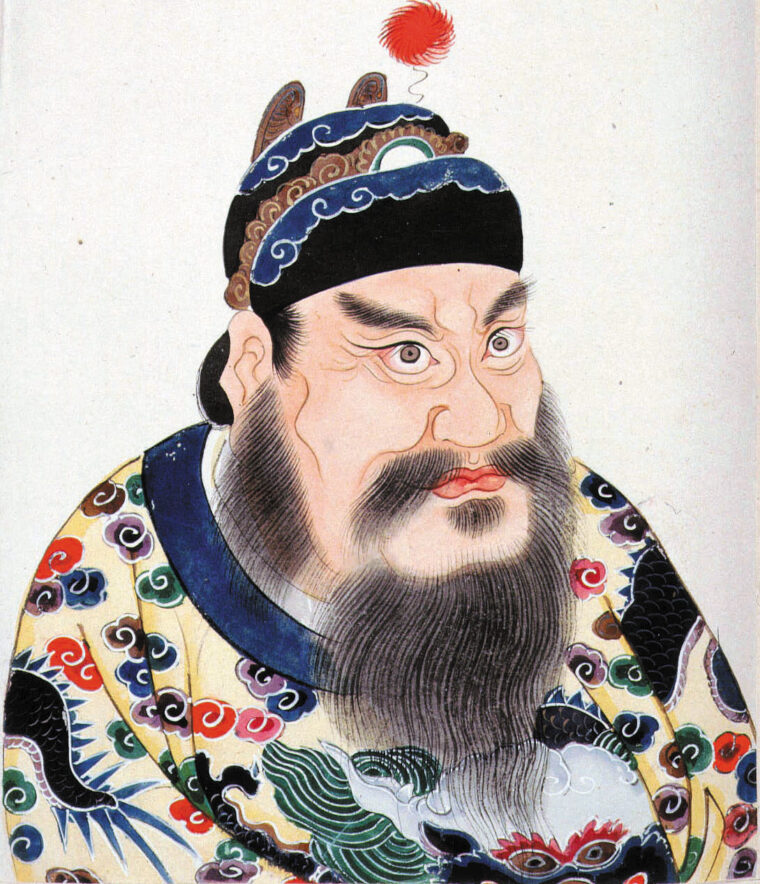
King Cheng realized his vengeance when Wang Jian overcame a combined Yen and Tai army later that same year. Reinforced with more troops, Wang Jian drove the king of Yen out of his capital, and the king managed to save his own skin by handing over the head of Crown Prince Dan to Ch’in general Li Hsin. Continuing his march to conquest, Cheng gobbled up the small kingdoms of Han in 230 bc. and Wei in 225 bc. The only remaining force capable of resisting the Ch’in juggernaut was the vast southern kingdom of Ch’u.
In 224 bc, Ch’in troops in two armies moved toward Ch’u. Despite strong resistance from the much-despised “monkey men” of that kingdom, General Wang Jian came out of retirement after early Ch’in reverses to lead a year-long siege of Ch’u that resulted in the seizure of the Ch’u capital and its king in 223 bc King Cheng then bribed the chancellor of Ch’i, the only remaining free state in China, to convince his own king to surrender in exchange for a peaceful retirement. The king of Ch’u did so, only to be thrown into prison and left to die of starvation. The era of the Warring States was over, and the era of the First Empire had begun.
Ruling “All Under Heaven”
To mark the transition, Cheng proclaimed himself Shih Huang-ti, or First August Emperor, after the divine kings of China’s legendary past. He boasted that he now ruled “all under heaven” and that his empire would be “enjoyed by his sons and grandsons for ten thousand generations.” Shih Huang-ti then razed the walls of the conquered cities and melted down the weapons of his foes, recasting them into 12 gigantic statues of himself. In an effort to unifiy China’s many cultures, he divided his new empire into 36 rigidly controlled commanderies subdivided into counties. Within the commanderies the official writing script, currency, systems of weights and measures, and even the gauges of the peasants’ cartwheels were standardized.
But Shih Huang-ti remained hungry for new conquests. Once more his court diviners listened to the wind and studied the heavens for celestial portents. The clamor of gongs and drums heralded the march of Shih Huang-ti’s armies, which lashed out to the north and south. Meng T’ien, whoses family had fought for Ch’in for generations, took over for the aged Wang Jian as the emperor’s premier warlord. With 100,000 troops, Meng Tien remained camped on the outer borders of the kingdom for the next 10 years, inflicting a major defeat on the Hsiung-nu barbarians, regaining the lost Ordos region of China, and striking deep into the Gobi desert. At the same time, he began the northernmost fortification of China, the 3,000-mile-long Great Wall. Meanwhile, other Ch’in armies conquered the barbarian lands of South China and Vietnam, although there the spread of Chinese culture was less effective and far-reaching, since the swampy terrain made it difficult for the Ch’in soldiers to stamp out guerrilla activity—a tradition of resistance to foreign occupation that the Vietnamese were still upholding 2,000 years later.
Shih Huang-ti’s relentless wars and grandiose building projects expended human lives without mercy. Some 300,000 soldiers and forced laborers chiseled, dragged, and emplaced the numberless rocks of the Great Wall, while sandstorms blinded them in summer and freezing Siberian gales battered them in winter. As many as a million workers died while building the Great Wall, which stretched from the Pacific coast to present-day Gansu province, and the wall became known was the world’s longest graveyard. The emperor specified that the wall be wide enough for six horsemen to ride abreast, six being his lucky number.
At least the Great Wall served the common good, unlike the emperor’s other grandiose construction projects. He had a replica built of every state palace he had captured—some 277 in all—and the massive Afang Palace towered above them all, some 1.5 miles long, 3,000 feet in depth, and 400 feet tall at its highest point. When Shih Huang-ti made a royal inspection of his kingdom, he traveled on pristine, 250-foot-wide roads, lined with trees and reserved exclusively for his use. He had whole valleys filled in and hills flattened to ease his progress, and once he even ordered 3,000 soldiers to deforest a mountain whose mythical goddess was said to have sent a wind to impede his crossing of a river.
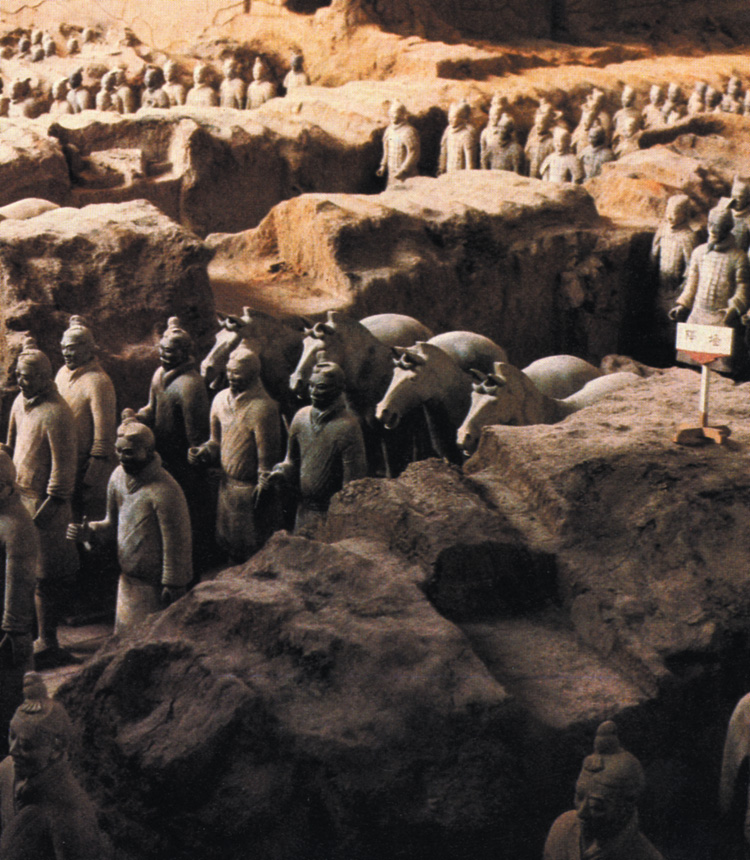
Even grander—or more egocentric—was the emperor’s planned mausoleum. Seven hundred thousand castrated and banished criminals slaved away for 36 long years to prepare his final resting place. The three-acre site contained no less than 7,000 life-sized terra-cotta soldiers equipped with real weapons, chariots, and pottery horses. The figures of the soldiers seemed to be modeled on real-life figures—no two were alike in facial features. The poses, too, were diverse, with some soldiers standing at attention, others kneeling with crossbows, still others driving chariots or poised in hand-to-hand combat. Also buried in the subterranean chamber was a painstaking recreation of Shih Huang-ti’s royal court, complete with palace buildings, major mountain ranges, and prominent rivers modeled from quicksand. Numerous unfortunate artisans were buried alive to preserve the secrets of the mausoleum, and hair-trigger mechanical crossbows were placed inside the vaults to discourage future looting or grave-robbing.
To pay for his extravagance, Shih Huang-ti crushed his subjects with taxation. He also crushed their spirits through widespread control of their minds, limiting education to the training of future officials and eradicating all traces of knowledge deemed harmful or superfluous. In one of the most reviled acts in Chinese history, the emperor followed the advice of Grand Chancellor Li Ssu and ordered the burning of all Confucian writings, as well as the recorded histories of his former rival states. For good measure, he buried alive some 460 Confucian scholars who, it was said, had “slandered the emperor” and “spread heretical ideas to confuse the public.” Other intellectuals were banished to the northern frontier, including Crown Prince Fu Su, who protested in vain the draconian policies of his increasingly tyrannical father.
The Vain Pursuit of Immortality
While he lived, no mortal dared to oppose the emperor’s iron-fisted rule. But the fear of his own inevitable death gnawed at Shih Huang-ti, and he obsessively drank “magical” elixirs supposed to ensure his immortality, while sending his navy on a fruitless search for the mythical island of the blessed. Ironically, he died in 210 bc, at the premature age of 49, while on a quest to find another mystic said to possess the secret of eternal life. The emperor was buried in his ornate sarcophagus, alongside his treasures and a number of his sacrified concubines.
Almost instantly, the pillars of the Ch’in empire began to crack. The always scheming Li Ssu tricked the crown prince into killing himself by producing a forged will of his father’s, installing in his place the incompetent Hu-hai, his youngest brother. Hu-hai, who cared only for sensual pleasure, immediately executed Li Ssu, along with 22 of his own brothers and sisters. Hu-hai himself was driven to suicide by a fake attack on the royal palace, and his duplicitous chamberlain, Chao Kao, hung the imperial seal around his neck and attempted to rule in his place. No one would listen. Shih Huang-ti’s surviving son, Tzu Ying, took vengeance by running a sword through Chao Kao’s body.
With the death of Shih Huang-ti, his family, and his best generals, peasants and garrison troops quickly threw off the imperial yoke. The old nobility rose again and once more mounted barbarians roamed across the nation’s borders. The official end of the Ch’in dynasty came in 206 bc, when Liu Pang, an army deserter, led a blood-crazed horde of peasants into the capital and killed the new emperor, Tzu Ying. Out of the ashes Liu Pang would forge the longer lasting and more tolerant Han dynasty.
Meanwhile, Shih Huang-ti slept the long sleep of the dead, increasingly forgotten by history until the chance discovery of his elaborate burial place in 1973 by an astonished peasant drilling a well. The site was excavated by the modern Chinese government, and the long-dormant clay army of the first Ch’in emperor, a man who was said to possess the mind of a tiger, once more saw the light of day. n
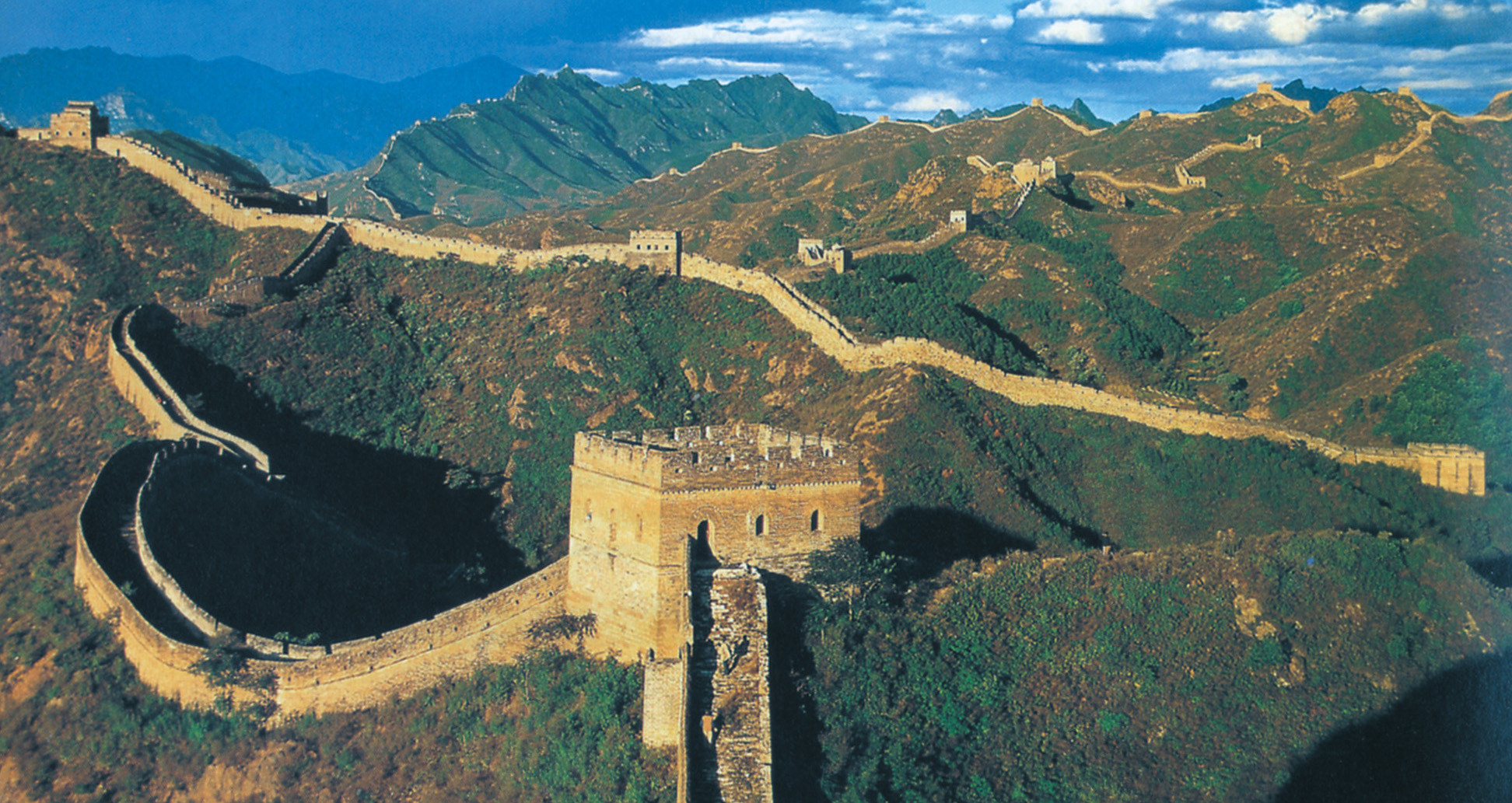
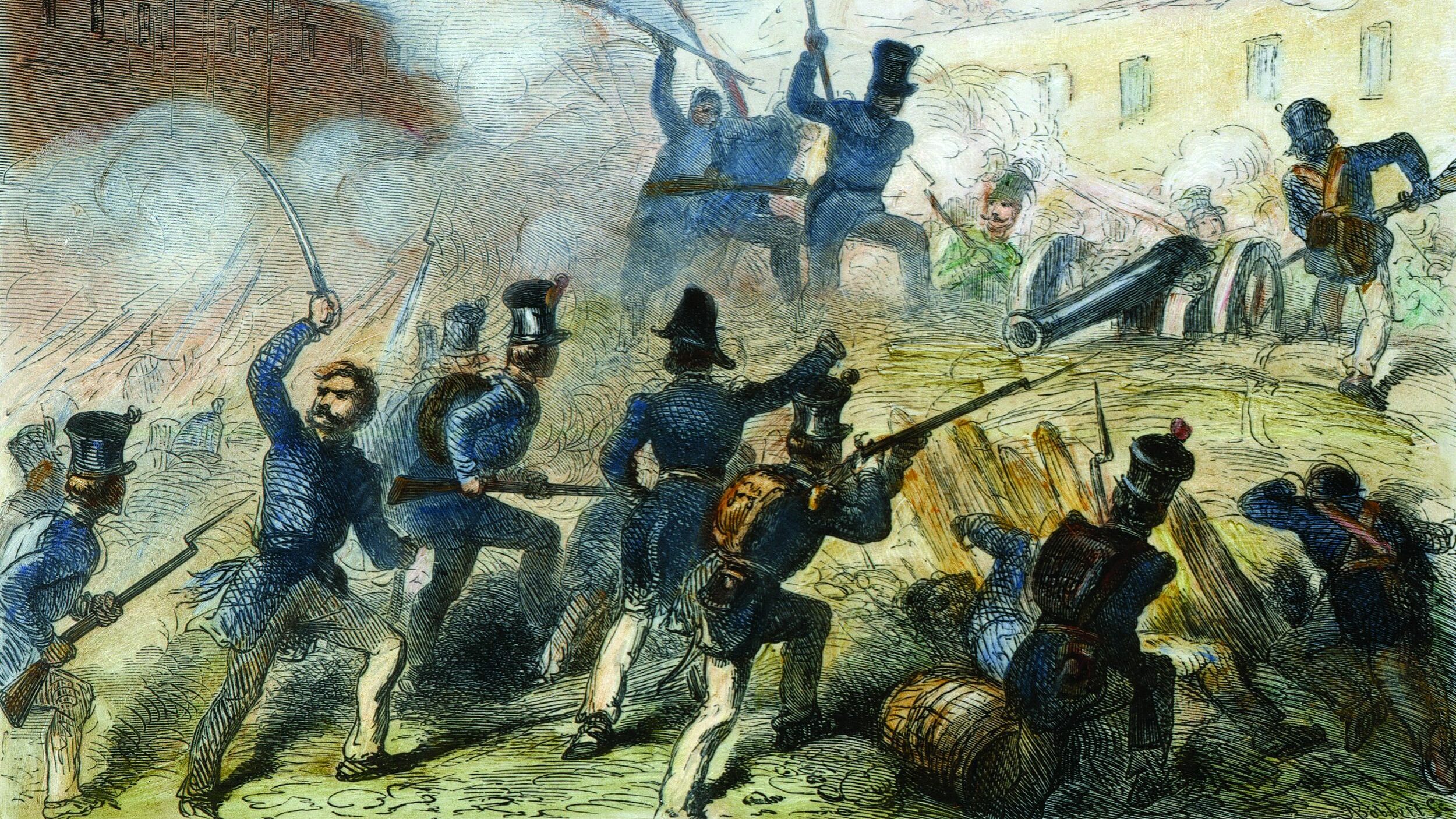
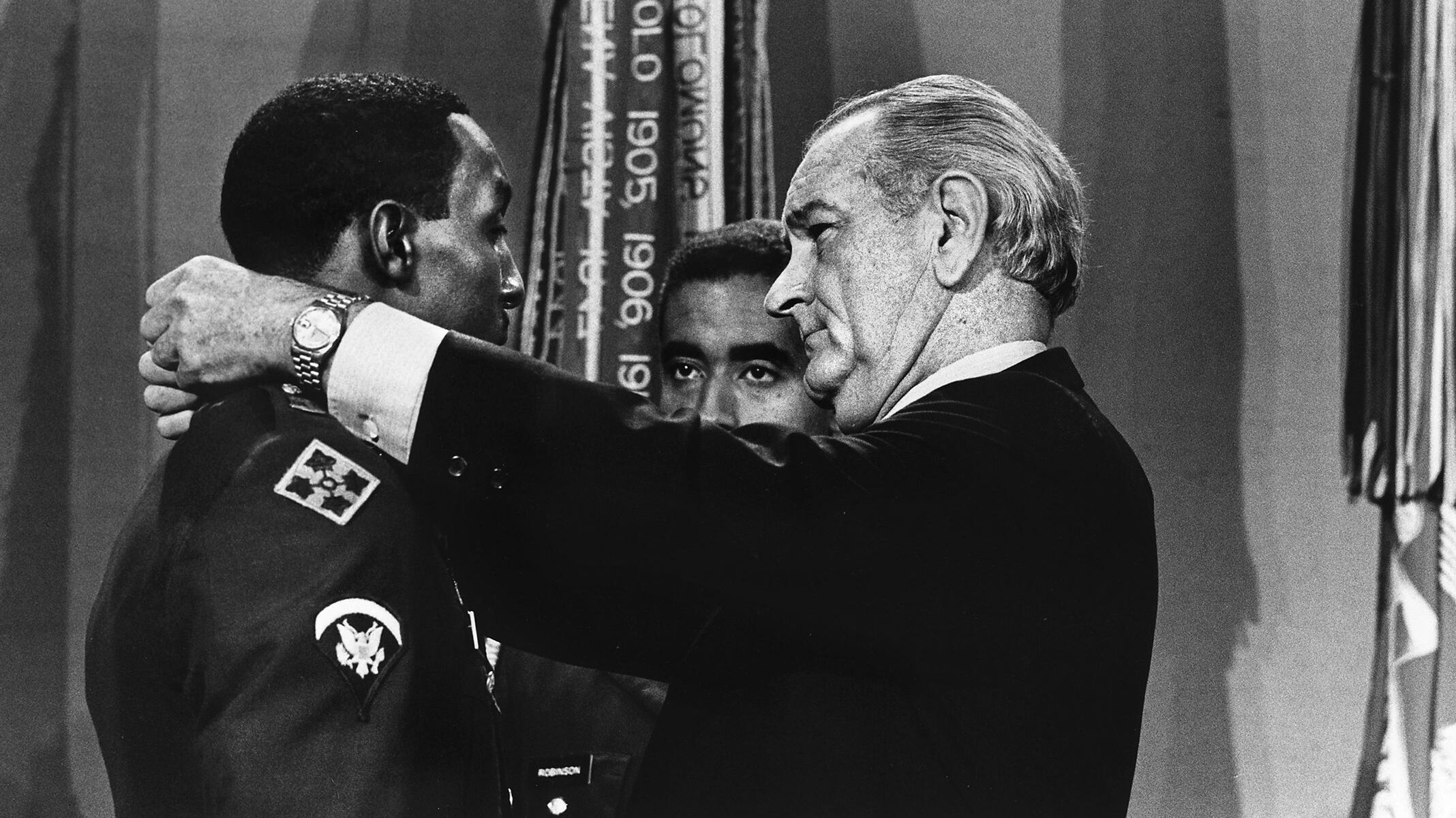
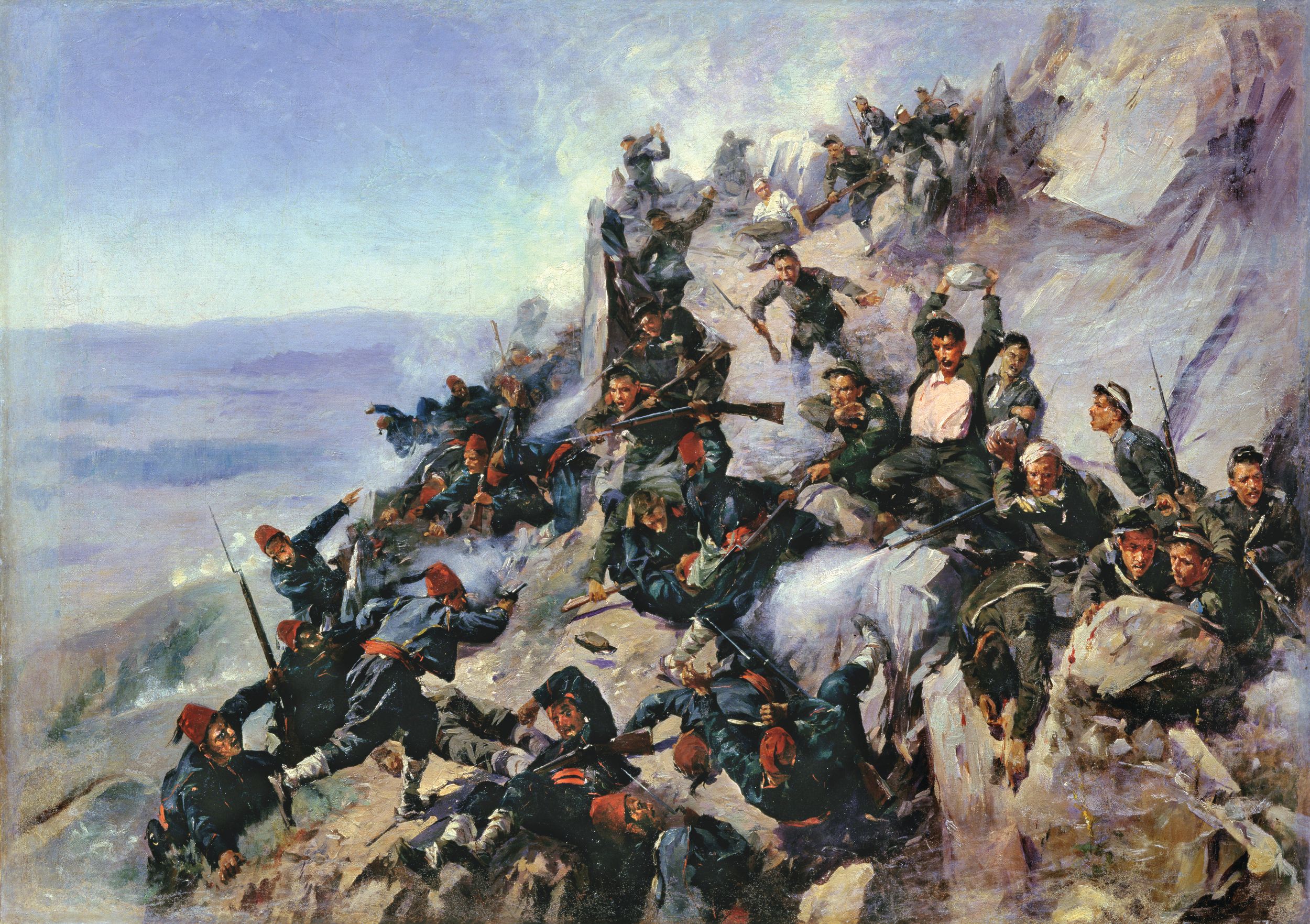
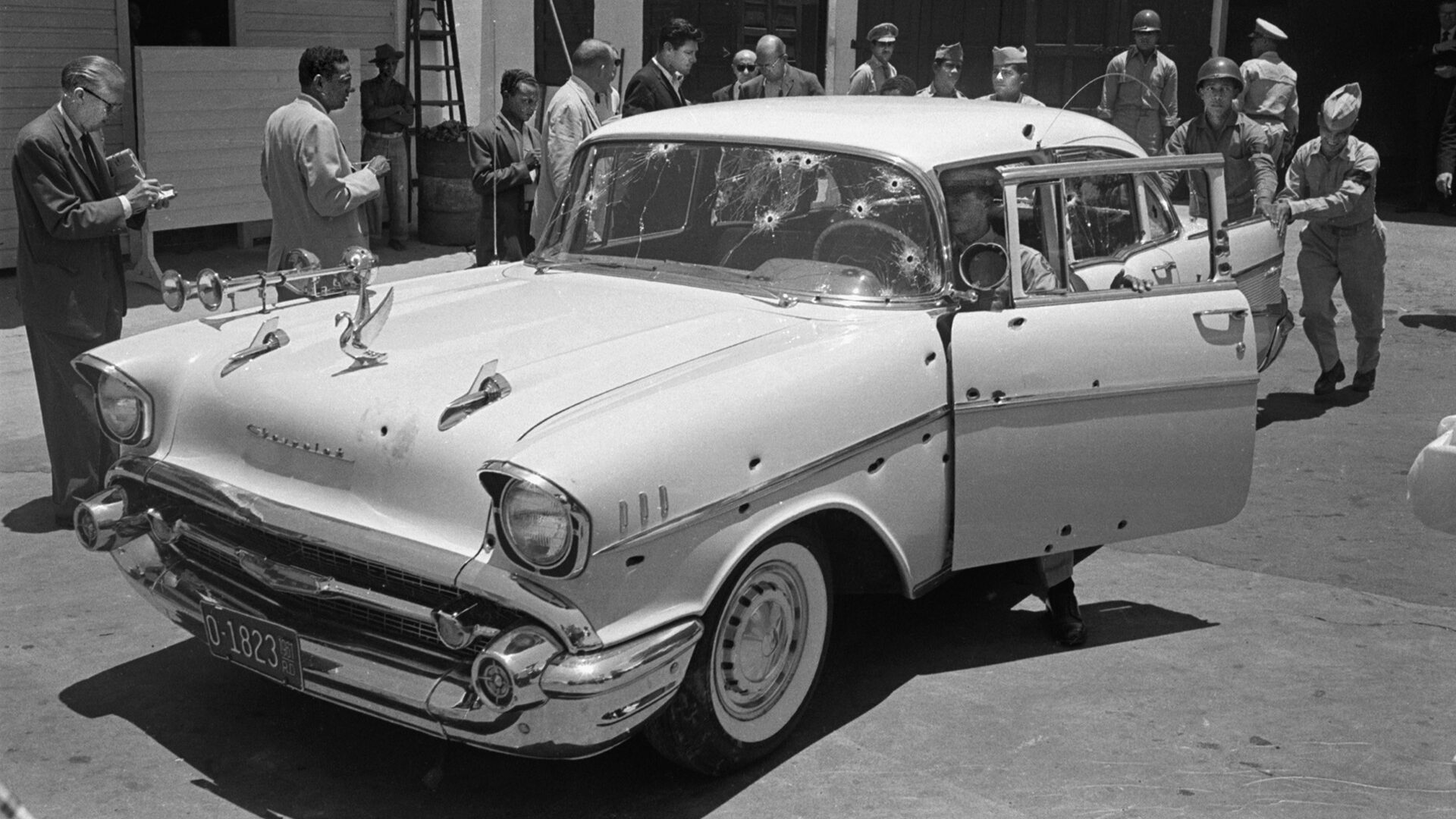

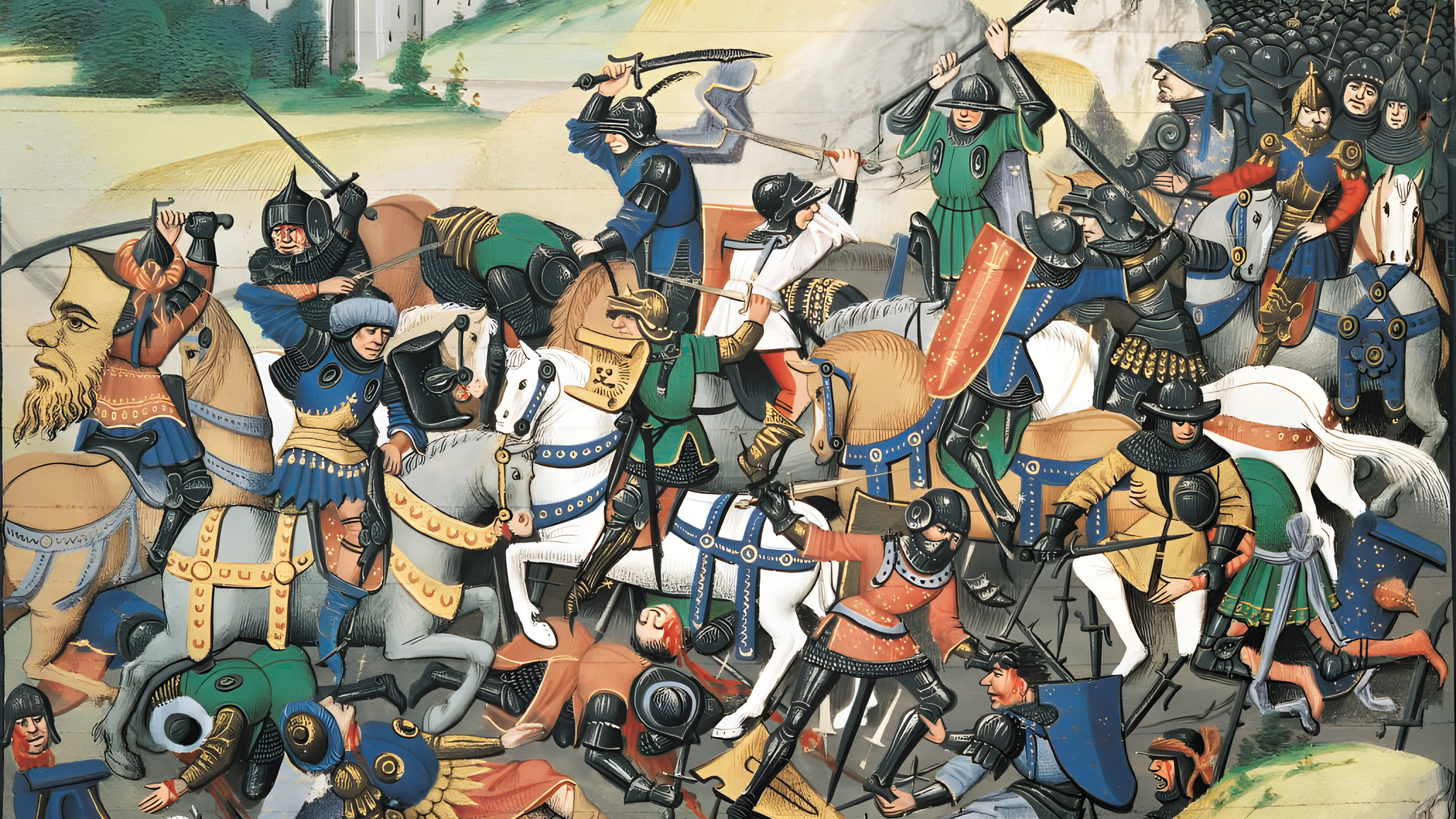
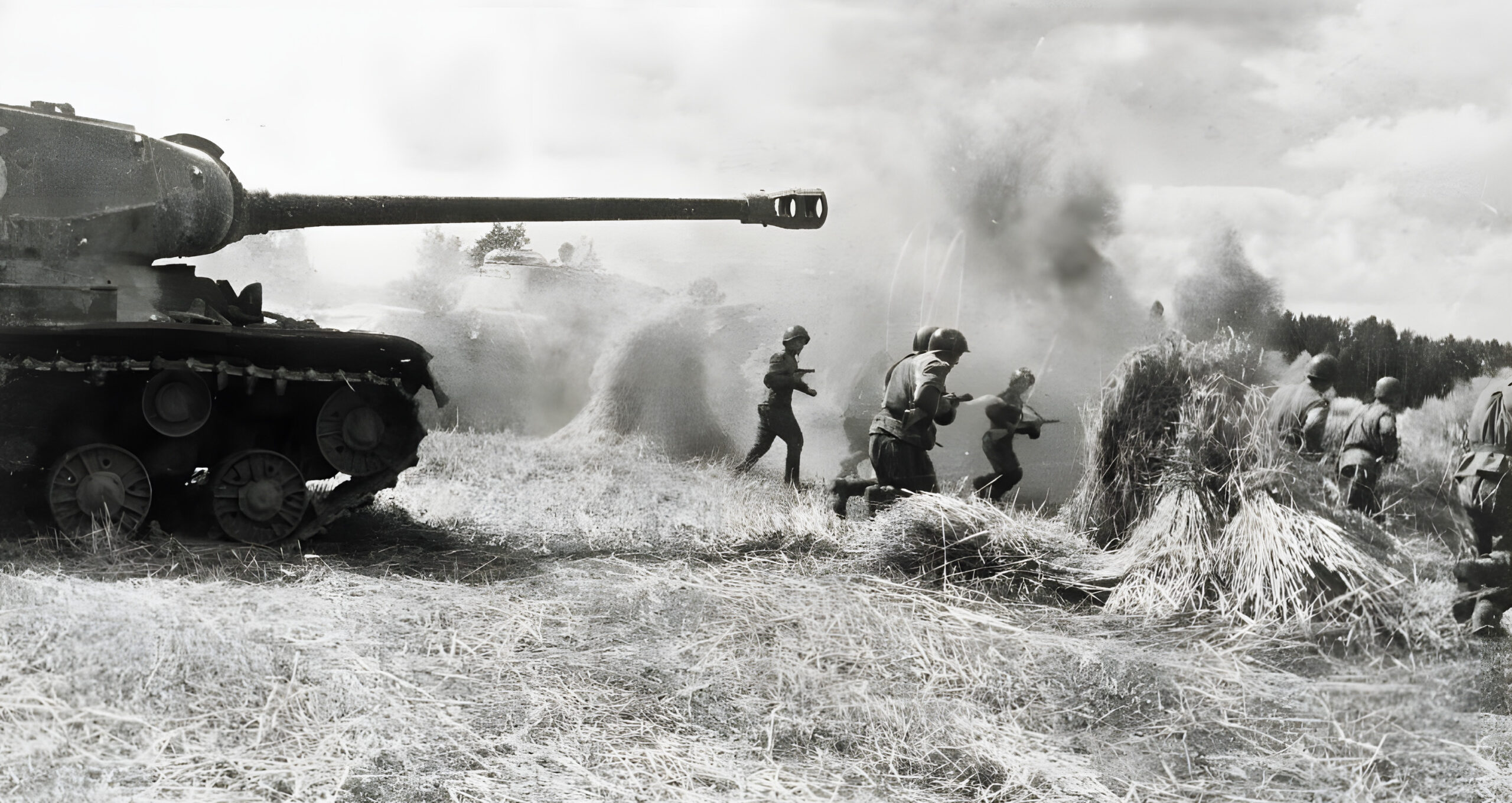
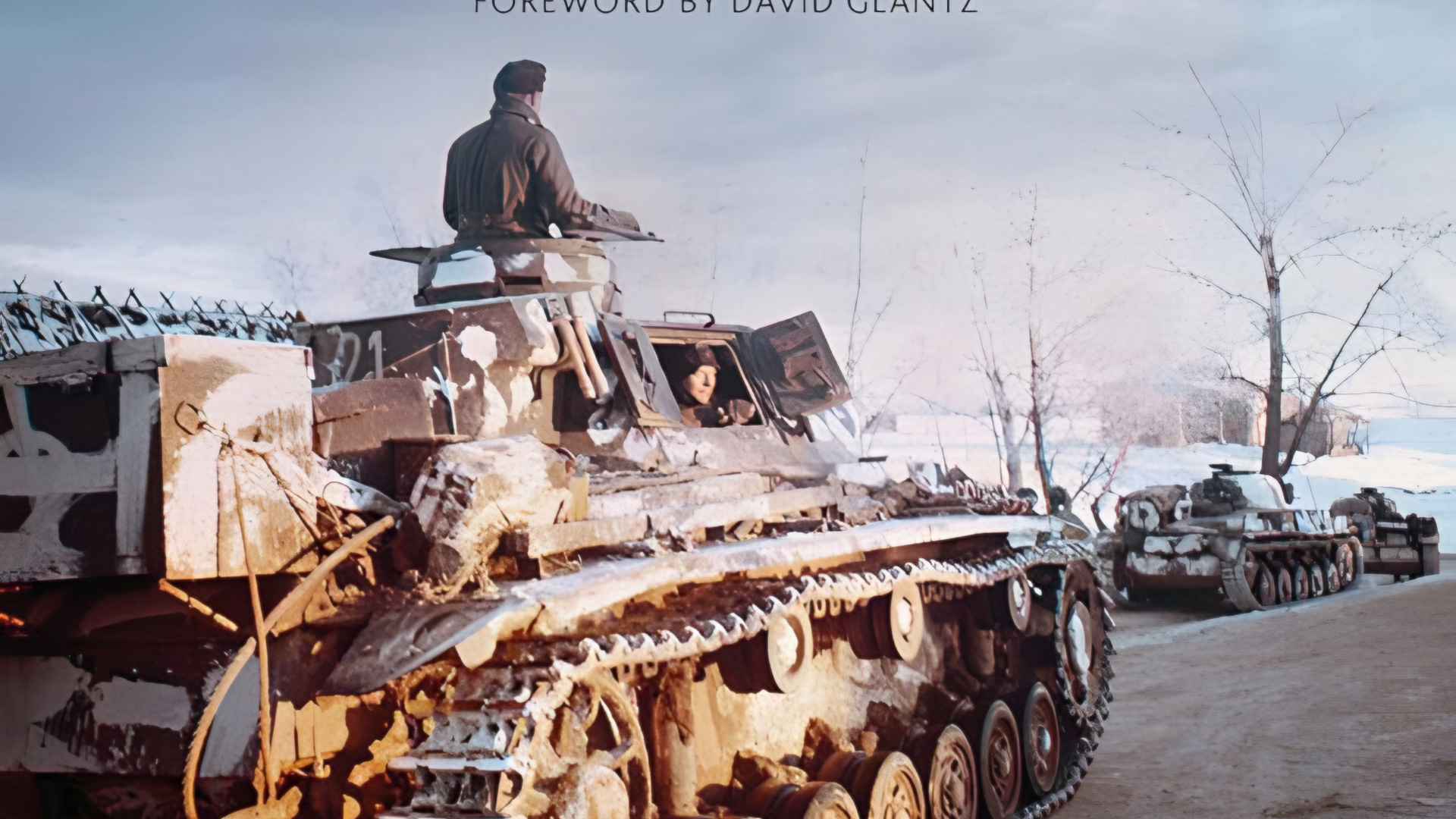
Join The Conversation
Comments
View All Comments